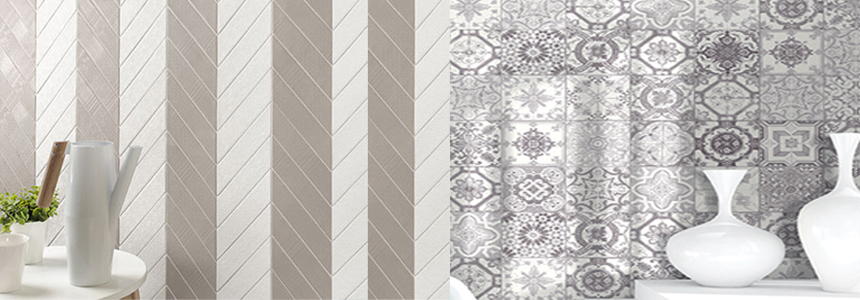Renovating a bathroom from top to bottom can be time-consuming, not to mention expensive. If you are only interested in updating the look of your bathroom, small changes can have a much bigger impact than you would expect. Consider changing the bathroom tile – on the floor, the walls etc. instead of a full-scale renovation.
It should come as no surprise that bathroom tiles come in a variety of colors, shapes, and materials. You don’t have to think the same material for the floor and the walls either. Some materials are great on one surface but not as good elsewhere. Other materials are more versatile – use them anywhere you wish.
Selecting tile for your bathroom and don’t know where to start? Here’s a quick guide to get you started:
Natural stone
Tile made from natural stone like marble, granite, limestone, and even slate have become popular in the bathroom. All of these, marble is the most popular for its classic look. Most of these materials are also available in a riot of colors from creams and whites to riotous blues, golds, and reds. Natural stone tiles come in a variety of finishes as well ranging from cleft and tumbled to sandblasted options.
However, natural stone is expensive to purchase and install. It’s not easy to maintain either. The material has to be sealed to protect against stains and scratches. The porous surface acts as a magnet to dirt. You might find yourself cleaning the bathroom more often but it is well worth the price for the beautiful look of natural stone.
Mosaics

Mosaic tile is a popular choice for other areas in the house but what about the bathroom? You can create a variety of designs using Mosaic tiles. They are less expensive than natural stone tiles. There are also durable and chemical resistant, so you don’t have to worry about spills.
But mosaics can also be slippery, especially when the floor is wet. While nonslip sealer can help, you’d be better off using mosaic tiles on the walls instead of the floor. Mosaic tiles also attract grout, so they’re not as easy to maintain as some other tile materials.
Glass Tile
It’s easy to see why glass tiles are so popular. They reflect light in ways that other materials cannot replicate and can make a small bathroom appear much larger. Glass tiles can make a bathroom look soft and inviting or elegant and glamorous. Using glass tiles on the floor can give the illusion of depth and using tinted glass can give you an attractive stained glass effect.
Glass tiles have a few cons as well. They are prone to scratches and not very easy to install. If you’re planning for glass tiles on the floor, make sure they’re rated for the purpose or use textured glass. You might want to confine glass tiles to the walls or in a specific focus area to draw attention. Remember, you don’t have to use the same materials throughout the bathroom!
Vinyl Tile
Vinyl is one of the most popular options when it comes to bathroom tile, not just for one but for several reasons. It is inexpensive and very practical. You can use it in every bathroom – right from the master bath to the powder room. When it comes to safety, comfort or flexibility, no other material can hope to match it. It is also very easy to cut to any size and install.
Vinyl has a bad aesthetic reputation but today’s options are a far cry from older designs. With the right colors and design, your guests won’t even know that they’re standing on vinyl tiles!
Ceramic and Porcelain Tile
Ceramic and porcelain tiles are a close runner-up to vinyl in the bathroom. While not quite as easy to install, they are still an inexpensive and practical option. You can get ceramic and porcelain tiles in a variety of colors and styles. You can even mimic natural stone or wood tile with the right design.
While easy to clean and maintain, these tiles can feel cold and uninviting to bare feet. Some people use radiant heating to offset this but you can just as easily cover the floor with some mats/rugs in strategic places.
Design Tips for Bathroom Tile

You can select tiles in multiple colors throughout the bathroom or go for a simpler aesthetic with one or two focal points. If you like a particular design, use different sizes of the same tile for the floor and walls to create a cohesive yet distinct look. If you want to focus on the tub or shower, select tiles in subtle colors (white, cream, or neutrals) for other areas.
Remember that you have to live with your tile choices (material, size, design, colors etc.) for many years to come. So choose wisely!











































